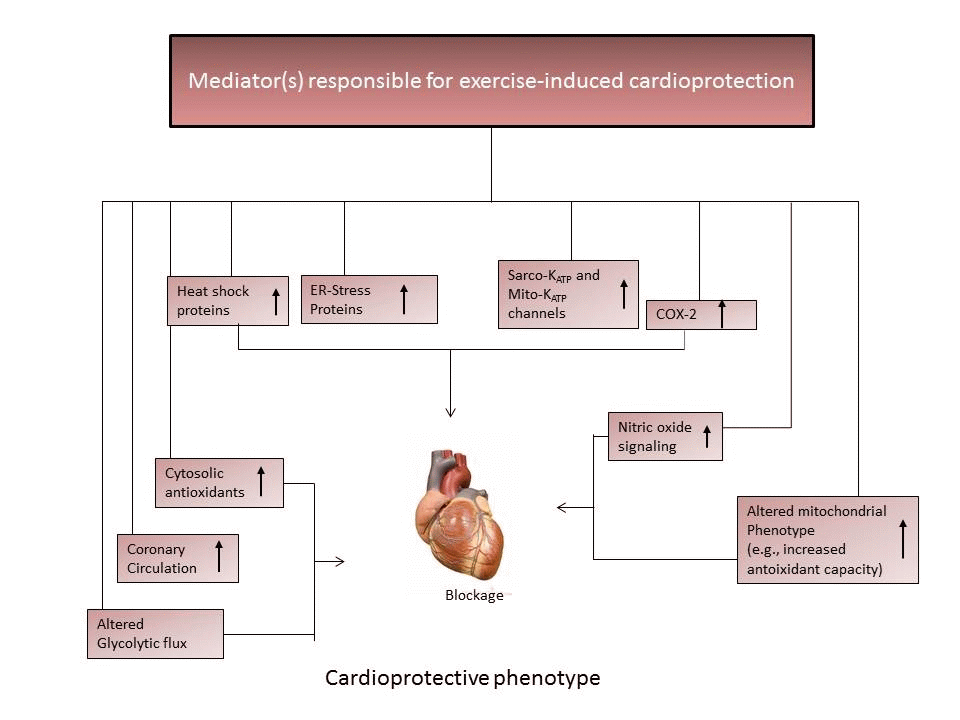Ischemia-reperfusion (I/R )injury and exercise
Myocardial ischemic injury results from severe impairment of coronary blood supply and produces a spectrum of clinical syndromes. It is known that I/R injury occurs on the restoration of coronary blood flow after a period of myocardial infarction. I/R injury is related to the elevated level of ROS, calcium overloading, and the loss of membrane phospholipids especially during the reperfusion. The harmful effects of ROS on cardiac tissue during I/R can be prevented by endogenous antioxidant systems.
It is well established that endurance exercise training improves myocardial tolerance to IR in both male and female animals as well as young and old animals (Starnes, Taylor et al. 2003). Exercise protects cardiac myocytes against IR-induced oxidative stress, and also protects mitochondria against IR-induced damage.
Lakka et al. demonstrated an inverse relationship between chronic physical activity and the incidence of first acute myocardial infarction, even in individuals with normal stress EKGs consistent with the concept that physical activity may shift a “vulnerable” thin-cap atheroma to a more stable lesion less prone to rupture (Lakka, Venalainen et al. 1994).
Regular exercise causes adaptations in the antioxidant capacity, protecting cells against the harmful effects of oxidative stress, thus preventing cellular damage. Physical exercise upregulate antioxidant defences. Several studies have reported that physical exercise increases myocardial activities of key antioxidant enzymes such as manganese superoxide dismutase (MnSOD), glutathione peroxidase, and catalase. SOD is a first line of defense against superoxide in cells, and SOD-mediated dismutation of superoxide results in formation of the nonradical ROS hydrogen peroxide. It is documented that increased MnSOD activity is essential to achieve optimal exercise-induced protection against both IR-induced cardiac arrhythmias and infarction (Hamilton, Quindry et al. 2004, Lennon, Quindry et al. 2004).
Zanchi et al. investigated the effects of 11- week exercise training in myocardial infarcted rats. They found that myocardial infarction significantly elevated vasoconstrictory response, which was related to the increased activity of NADPH-oxidase. However, moderate exercise reduced NADPH-oxidase activity and seems to be a key mechanism by which exercise training mediates its beneficial effects in the infarcted heart (Zanchi, Bechara et al. 2008).

Figure 6. Schematic representation of the role of mediators for exercise-induced cardioprotection